A
bowl of dipping sauce is almost always besides a Vietnamese meal. This is so
different from the dishes of other nations, said culinary expert Lê Kim Chi of
Quán Ăn Ngon Restaurant chain.
Chi
said each kind of food had its own dipping sauce. For example, bún chả (fresh
rice vermicelli and grilled pork slices), has its own delicious dipping sauce
that US President Barack Obama said he enjoyed so much while visiting Việt Nam
in 2016.
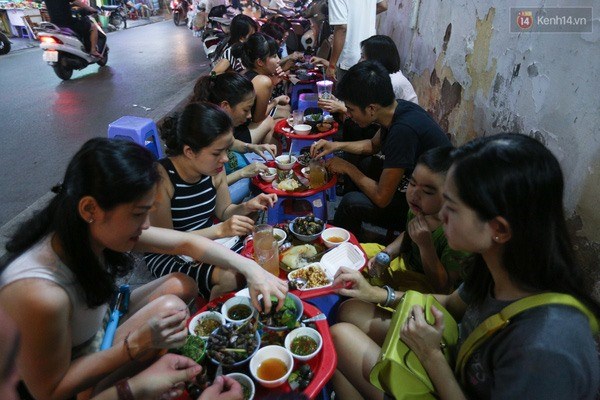
Packed: Crowds of eaters enjoy boiled snails in Hà Nội’s Old Quarter’s Đinh Liệt Street.
This
sauce includes fish sauce, garlic, chili, sugar and pieces of kohlrabi and
carrot.
Đỗ
Thu Hà, 62, who sells boiled snails in Hà Nội Old Quarter’s Đinh Liệt Street,
said she could sell as much as 200kg of snails a day because her food had been
praised as one of most tasty snacks in the capital. She said the appeal of the
dish was largely due to the fresh sauce.
Asked
about her secret ingredients, she said: “I make my dipping sauce from fish
sauce, which gives it its saltiness, kumquats which give it sourness, sugar for
sweetness; all combined with the fragrance of ginger, garlic and lemon leaves,
particularly peppery hot red chili. The recipe was handed down from my mother
and existed for half of a century.”
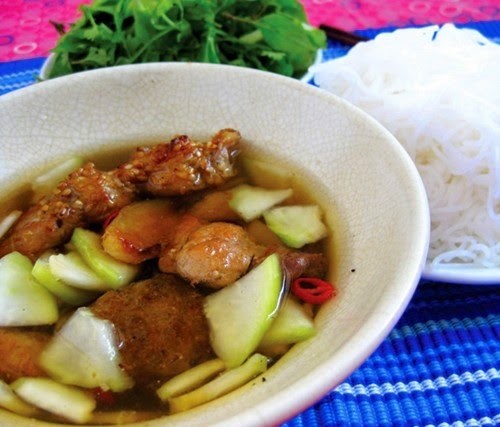
Food for a president: A bowl of bún chả dipping sauce.
Hà’s
daughter Phạm Thu Trang, 34, said her mother was the first in the Old Quarters
to think of how to use kumquat and citronella to create aromatic flavours for
her dipping sauce.
Trang
admitted that until now she could not learn how to make the sauce from her
mother because she did all the processes, from cleaning the snails, boiling
them - and cutting chili and lemon leaves.
“My
mother does not dare to let us do this work because she is afraid we could
spoil the sauce,” said Trang.
Each
food should have its own dipping sauce. If a sauce is not good, the taste of
the dish itself is also compromised.
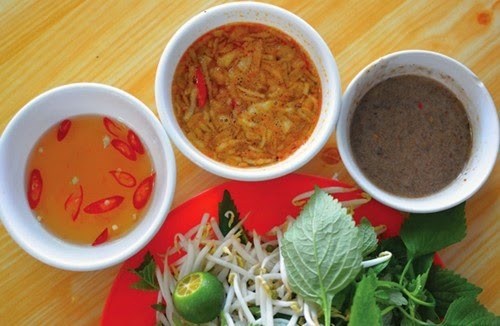
Take your pick: Dipping sauces are essential at all daily meals. Photos amthucvietnam.com
Herbalist
Nguyễn Hữu Vinh, from the National Hospital of Traditional Medicine, said
boiled snails may cause colds in the stomach, so ginger and garlic in the
dipping sauce helped stop any pain or diarhoea.
One
of my overseas Vietnamese friends, Dương Quang Chăn from the US, who is in Việt
Nam for business, said he was interested in my frugal meal of boiled rau muống
(morning glory) with a dipping sauce of garlic and chili soaked in vinegar and
cà pháo (salted baby eggplant).
“The
dipping sauce gives me a good appetite,” said Chăn, noting that he liked the
sauces of traditional dishes, such as nem rán (fried spring roll -- minced pork
and other ingredients wrapped up in thin rice paper), gỏi cuốn (boiled pork,
shrimp and fresh herbs wrapped up in rice paper) because both had their own
characteristics.
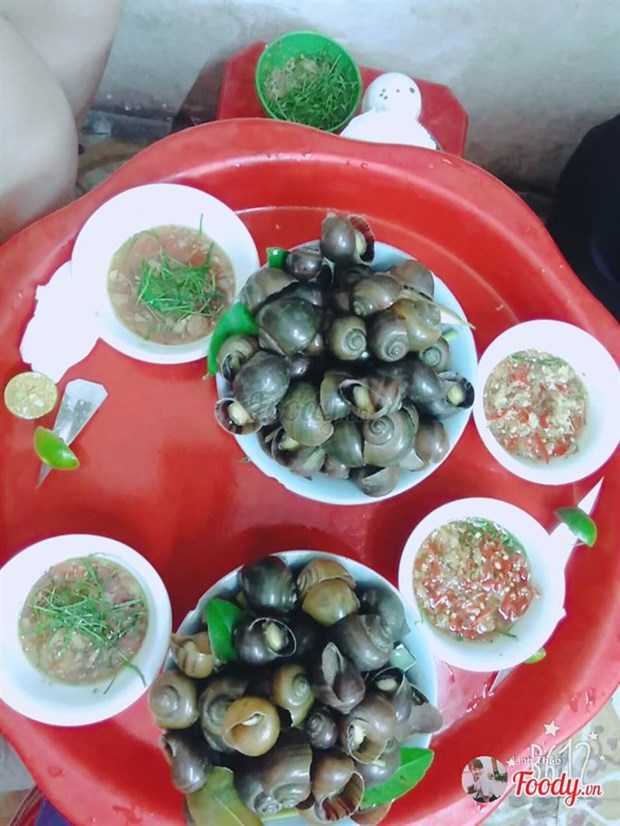
The secret: The secret of making boiled snails tasty depends on the dipping sauce.
“I
sometimes sip the sauce because I like its saltiness, sourness and peppery
sweet taste. The sauces not only make overseas Vietnamese remember our homeland
but also makes a lot of foreigner’s keen for the novel tastes," said
Chăn.
Culinary
expert Chi said unlike China’s plum sauce, or Japan’s wasabi or Italy’s tomato
gravy, Vietnamese dipping sauces have special flavours help to express their
philosophy of life.
She
said apart from dipping sauce, aromatic herbs were also essential to Vietnamese
dishes. The herbs such as coriandrum sativum, basil, marjoram, coriander and
eryngium were eaten raw with certain foods.
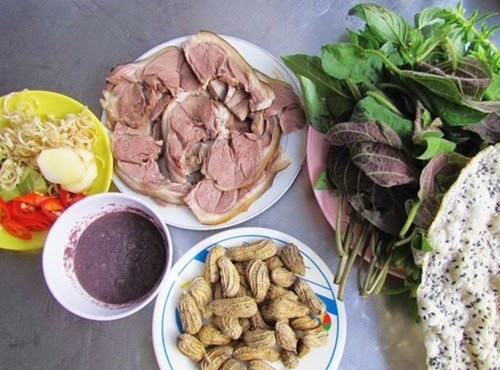
Phew: Shrimp paste is one of the nation’s most famous dipping sauces.
For
example, embryo duck egg should be eaten with thread-cut ginger (yang) and
fragrant knotweed (yin) to prevent heat and diarrhoea or fried tofu with
vermicelli should be eaten with mắm tôm (shrimp paste) and marjoram to make it tastier
and reduce bad smells.
Herbalist
Vinh said these fresh herbs were also good antibiotics to treat many ailments
such as fevers, colds, stomach-ache, head-ache or diarrhoea. They also helped
to reduce obesity.
By VNS